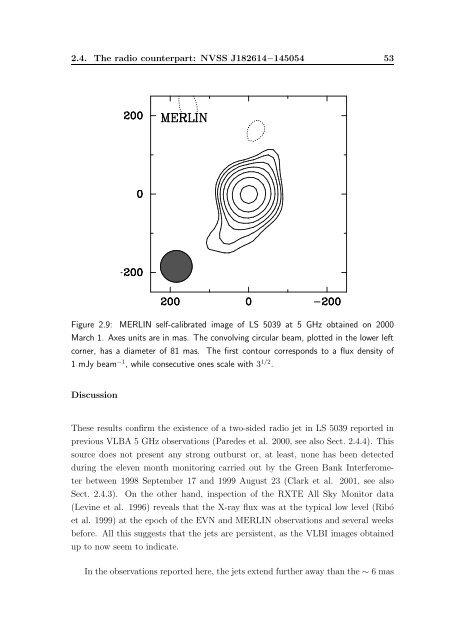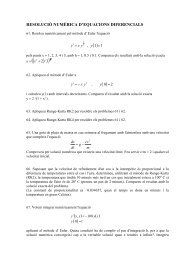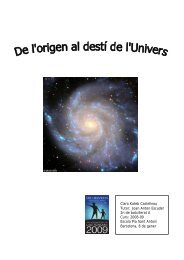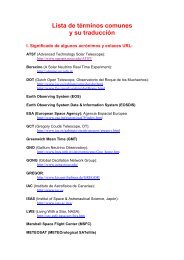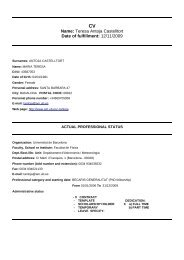Universitat de - Departament d'Astronomia i Meteorologia ...
Universitat de - Departament d'Astronomia i Meteorologia ...
Universitat de - Departament d'Astronomia i Meteorologia ...
You also want an ePaper? Increase the reach of your titles
YUMPU automatically turns print PDFs into web optimized ePapers that Google loves.
2.4. The radio counterpart: NVSS J182614−145054 53<br />
Figure 2.9: MERLIN self-calibrated image of LS 5039 at 5 GHz obtained on 2000<br />
March 1. Axes units are in mas. The convolving circular beam, plotted in the lower left<br />
corner, has a diameter of 81 mas. The first contour corresponds to a flux <strong>de</strong>nsity of<br />
1 mJy beam −1 , while consecutive ones scale with 3 1/2 .<br />
Discussion<br />
These results confirm the existence of a two-si<strong>de</strong>d radio jet in LS 5039 reported in<br />
previous VLBA 5 GHz observations (Pare<strong>de</strong>s et al. 2000, see also Sect. 2.4.4). This<br />
source does not present any strong outburst or, at least, none has been <strong>de</strong>tected<br />
during the eleven month monitoring carried out by the Green Bank Interferome-<br />
ter between 1998 September 17 and 1999 August 23 (Clark et al. 2001, see also<br />
Sect. 2.4.3). On the other hand, inspection of the RXTE All Sky Monitor data<br />
(Levine et al. 1996) reveals that the X-ray flux was at the typical low level (Ribó<br />
et al. 1999) at the epoch of the EVN and MERLIN observations and several weeks<br />
before. All this suggests that the jets are persistent, as the VLBI images obtained<br />
up to now seem to indicate.<br />
In the observations reported here, the jets extend further away than the ∼ 6 mas


